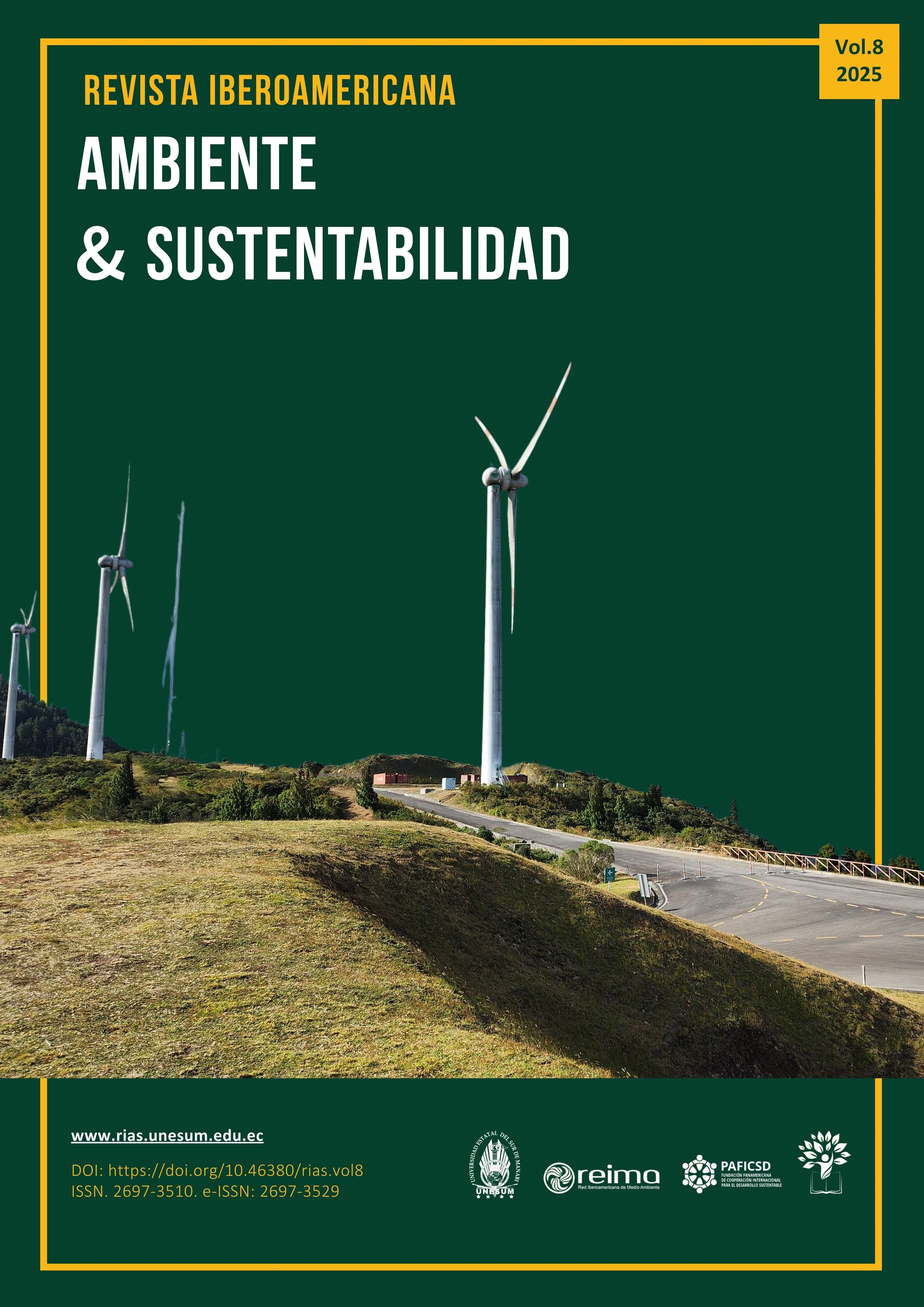Offshore wind potential in Mexico: Optimal zones for fixed-bottom wind turbines
DOI:
https://doi.org/10.46380/rias.v8.e498Keywords:
energy modeling, energy transition, geostatistical simulation, marine infrastructure, renewable energy, technical feasibilityAbstract
Wind energy is a renewable resource harnessed by turbines installed onshore and offshore. Since the 1990s, countries such as Denmark and the United States have developed offshore wind farms, driving energy transition. In contrast, Mexico, despite favorable geographic and climatic conditions, lags in the assessment and exploitation of offshore wind resources. This study aimed to identify Mexican regions with the highest offshore wind potential for fixed-bottom turbines installation, considering geographic, climatic, and technological factors. Geostatistical simulations using the Global Wind Atlas software were used to characterize the wind potential in the Isthmus of Tehuantepec and the coasts of Yucatán and Veracruz. An offshore wind farm with fixed-bottom turbines was subsequently simulated in the System Advisor Model software to assess its technical and economic feasibility. Results indicated that the Isthmus of Tehuantepec exhibited the greatest potential, thanks to its high wind speed, atmospheric stability, and optimal bathymetric conditions, enabling high energy yield and competitive operational costs. This study demonstrated the relevance of rigorous technical analysis to guide strategic decisions, diversify the energy matrix, drive transition to renewable sources, and develop offshore wind infrastructure in Mexico.
Downloads
Metrics
References
Agencia Internacional de Energías Renovables. (2023). Renewable Power Generation Costs in 2023. https://shre.ink/Sf5g
Agencia Internacional de Energías Renovables. (2024). Renewable capacity statistics 2024. https://acortar.link/mnRHDp
Agencia Internacional de la Energía. (2023). World Energy Outlook 2023. https://www.iea.org/reports/world-energy-outlook-2023
Arredondo-Gámez, M., García-Nava, H., Rodríguez-Hernández, O. y Lámbert-Arista, A. (2022). Estimación del recurso eólico marino en la península de Baja California, México, utilizando la base de datos ERA 5 [Resumen de presentación]. En XII Congreso Internacional de la Asociación Española de Climatología (pp. 543-555). https://shre.ink/SfAh
Asociación Mexicana de Energía Eólica. (2023). Reporte de energía eólica en México 2022. https://acortar.link/luFfIU
Comisión Electrotécnica Internacional. (2019). IEC 61400-1: 2019- Wind turbines – Part 1: Design requirements (Standard No. IEC 61400-1 Ed. 4.0). https://shre.ink/SfAl
Consejo Global de Energía Eólica. (2024). Global Offshore Wind Report 2024. https://shre.ink/SfLP
Global Wind Atlas. (2024). Conjunto de datos [Data set]. https://globalwindatlas.info
Laboratorio Nacional de Energías Renovables. (2022). System Advisor Model. User Guide (Version 2022). https://sam.nrel.gov
Laboratorio Nacional de Energías Renovables. (2023). System Advisor Model Version 2023 [Software]. https://sam.nrel.gov/download/version-2023-12-17-1.html
Li, J., Wang, G., Li, Z., Yang, S., Chong, W. T. y Xiang, X. (2020). A review on development of offshore wind energy conversion system. International Journal of Energy Research, 44(12), 9283–9297. https://doi.org/10.1002/er.5751
Meza-Carreto, J., Romero-Centeno, R., Figueroa-Espinoza, B., Moreles, E., & López-Villalobos, C. (2024). Outlook for Offshore Wind Energy Development in Mexico from WRF Simulations and CMIP6 Projections. Energies, 17(8), 1866. https://doi.org/10.3390/en17081866
Olivares, G. M. (2021). Incentivos regulatorios para el desarrollo de la energía eólica marina en Chile. Revista Derecho Administrativo Económico, 33, 227-253. https://doi.org/10.7764/redae.33.8
Pryor, S. C., Barthelmie, R. J. y Shepherd, T.J. (2021). Wind power production from very large offshore wind farms, Joule, 5(10), 2663–2686. https://acortar.link/YQeTJf
Puerta de Armas, Y. G. (2022). Editorial. Revista Iberoamericana Ambiente & Sustentabilidad, 5, e294. https://doi.org/10.46380/rias.vol5.e294
Secretaría de Energía. (2023). Parques eólicos en México. Capacidad instalada. Gobierno de México. https://acortar.link/WBxYC4
Urbano-Juárez, N. (2023). Transición energética en México, retos y desafíos. Revista Lex, 6(22), 308-326. https://doi.org/10.33996/revistalex.v6i22.163
Vázquez-Pérez, J. T. (2021). Iniciativa de reforma a la Ley de la Industria Eléctrica: Retroceso en materia energética. Centro de Investigación Económica y Presupuestaria. https://acortar.link/cpJ2LN
Published
How to Cite
Issue
Section
License
Copyright (c) 2025 Denise Margarita Rivera Rivera, Claudia Rebeca Rábago Arredondo

This work is licensed under a Creative Commons Attribution-NonCommercial-ShareAlike 4.0 International License.
This work is licensed under a Creative Commons Attribution-NonCommercial-ShareAlike 4.0 International License (CC BY-NC-SA 4.0)
© This license allows users to distribute, remix, adapt, and build upon the material in any medium or format, provided that attribution is granted to the creator. The license allows commercial use. If you remix, adapt, or develop the material, you must license the modified material in identical terms.














